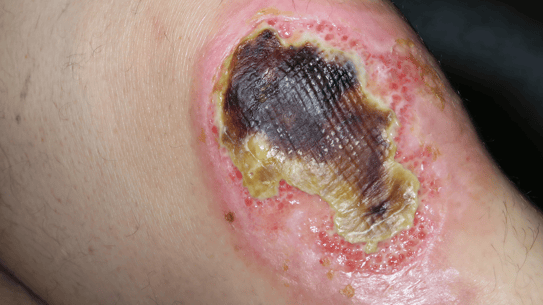1 professionals
Burns: Clinic, diagnosis and treatment
Burns: Clinic, diagnosis and treatment
URL copied
Medical editor: Dr. Pierre Schneider, Dermatologist, Saint-Louis Hospital, France.
Related topics
The physiopathology of burns is complex and depends on the depth, extent and cause of the burn2,4:
Distinguishing between a superficial and a deep second-degree burn can be difficult, especially since the burn may worsen over time2.

The inflammatory response is a key element in the physiopathology of burns. Immune cells, such as neutrophils and macrophages, migrate to the burn area to remove dead cells and tissue debris. However, this excessive inflammatory response can cause damage to healthy tissue, resulting in a systemic response called systemic inflammatory response. Cytokines, signalling molecules involved in inflammation, are released from the damaged cells, and can cause disruptions in clotting, blood pressure, and organ function4.
In the case of an acute burn, several factors must be determined:
Treatment of burns depends on the severity of the burn:
Can often be treated with home care such as placing a sterile dressing and continuing topical care to prevent infection and promote healing.
They usually require professional medical care2.
The acidic or basic solution should be neutralized by its antidote, or else by continuous irrigation for 10 min with tap water (except for burns inflicted by self-defence bombs)1,2.
Then hospitalization in a specialist Burns Service center. The main principles of care are1,5:
No treatment needed: ending contact allows a progressive regression of the symptoms3.
How are burns on a pregnant woman treated?
For a pregnant woman: are recent scars in the epidural injection area a problem?
Are there any treatments able to help the recovery of sensitivity following a burn?
What does the presence of telangiectasias mean?
Create easily your professional account
I create my accountAccess exclusive business services unlimited
Access valuable features : audio listening & tools sharing with your patients
Access more than 150 product sheets, dedicated to professionals
